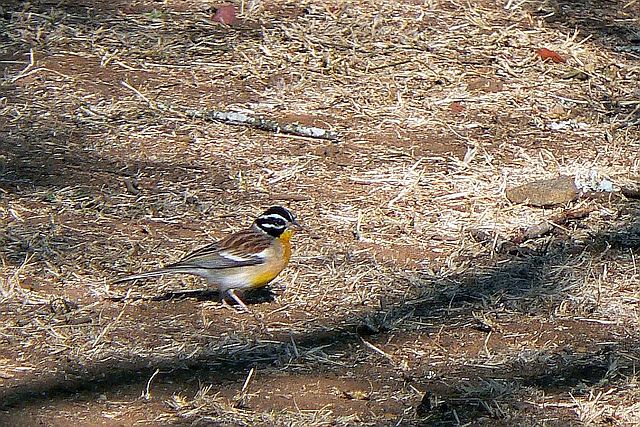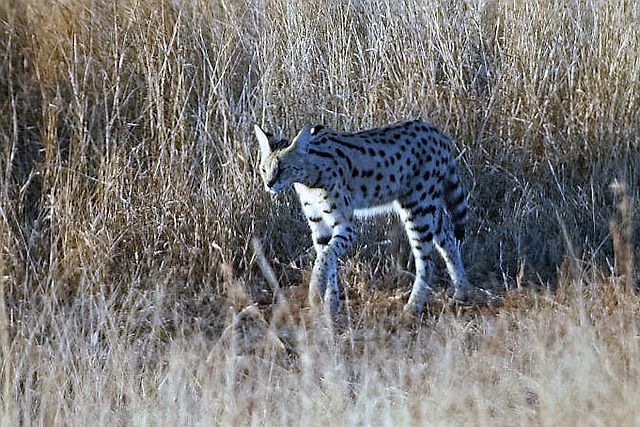
Swaziland, Hlane, 31 August 2014
Identification: Size medium to large (slightly smaller than sparrow); build slender; tail longish, rounded, black, tipped and edged white (conspicuous in flight); head black; stripe on crown, eyebrow and stripe below eye white; back rufous, streaked black; rump plain grey; below bright yellow, washed deep orange on breast (diagnostic); 2 conspicuous white wingbars. Female: Head stripes more buff than white. Immature: Duller and paler than ♀; breast streaked brown.
Distribution: Africa S of Sahara, except much of W Africa; widespread in South Africa except most of dry W.
Habitats: Woodland, savanna, exotic plantations, riverine bush, farmyards, gardens.
Habits: Usually solitary or in pairs; sometimes gregarious in flocks of up to 20 birds when not breeding; forms mixed bird parties with other buntings and canaries. Forages mainly on ground, walking with small steps; sometimes hops. Sings from perch in tree, but not usually in open. Flight deeply undulating; flicks tail up on alighting.
Food: Insects (beetles, termites, ants), seeds, buds.
Breeding: Season: September to March (mainly November-December) in E Cape, October to February (mainly October-December) in KwaZulu-Natal and Gauteng. Nest: Shallow, loosely-built cup of grass stems and roots, lined with fine rootlets and sometimes hair; cup diameter 5 cm, in horizontal fork of small tree or low bush, seldom concealed. Clutch: 2-4 eggs (usually 2-3). Incubation: 12,5-13 days by ♀ only. Nestling: 16-17 days; fed by both parents.




